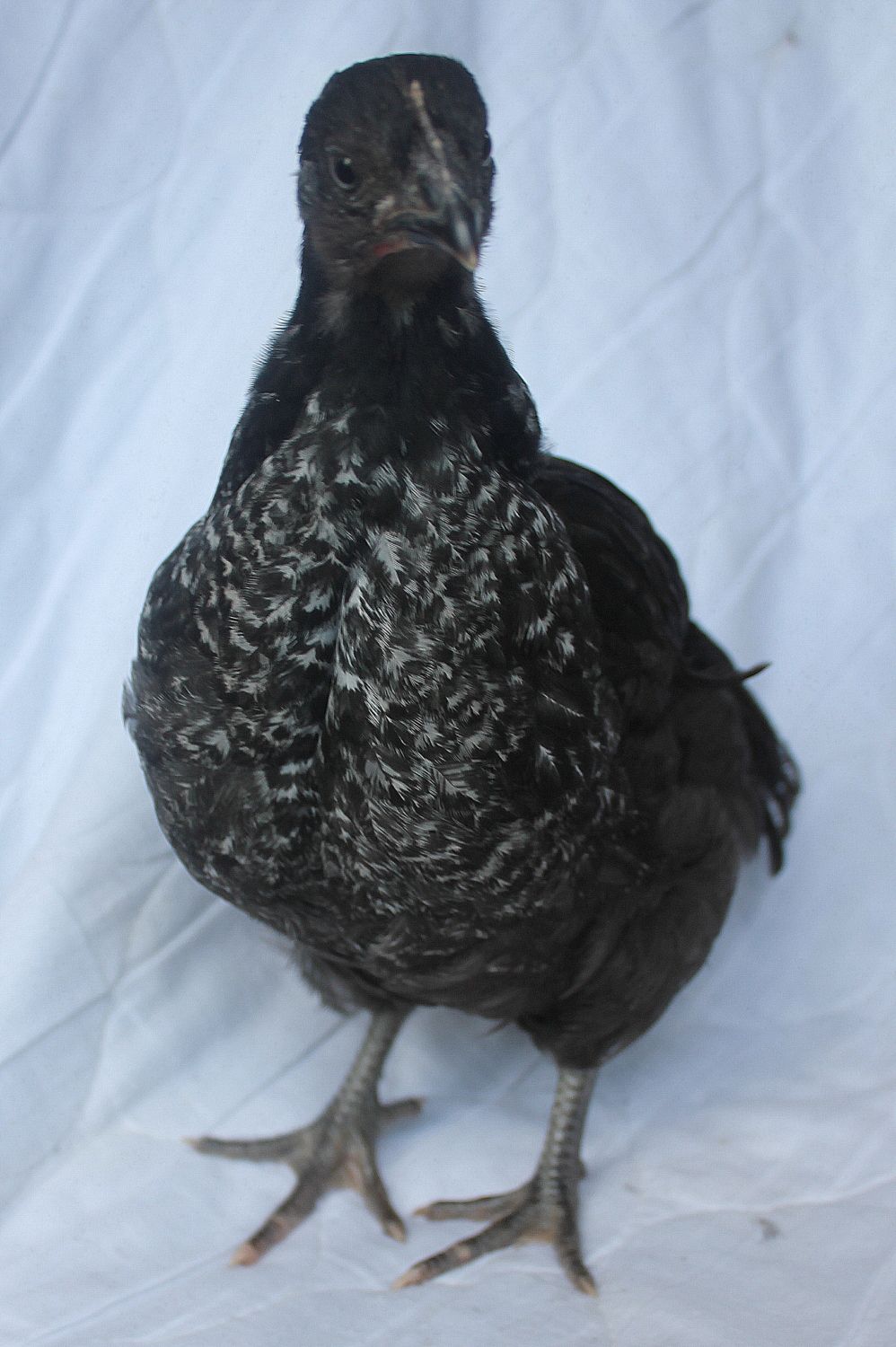- Oct 22, 2013
- 81
- 4
- 43
We're just a family raising for eggs, looks and fun for the children, so we have a mix of mainly heritage breeds crossed to first gen hybrid mutts - but we are raising extra this year hoping for some rugged, pretty hybrids to sell and hubby is going to eat the roos while I'm not watching! We hatched several clutches last Spring but they were all with bought eggs. This is the first time we've hatched from scratch.
The first hatch was a bit of a surprise though. Our roo is a Light Sussex so all babies are his.
I hatched some from our gingernut girls expecting some pale ginger Sussex looking hens, but unfortunately they are virtually indistinguishable from the three purebred LS we hatched out! She's 3/4 Light Sussex & 1/4 Rhode Island Red.

This was my experiment with a sex linked cross. I wasn't sure if it would work mating my LS roo over the barred rock girls. I hatched three of those, and two of them looked exactly like barred rocks, starting out with a spot on their little dark heads. Those are roos without a doubt. This one I believe is a girl and she's patterned quite differently. Her back is completely dark, unlike the boys:

This one was the biggest surprise of the lot, but perhaps that just shows my naivety when it comes to avian genetics. I hatched her from my purebred lavender Araucana girls (British standard, so they have tails). Now, I would have thought if you cross a white bird with a grey bird you'd get a bird that's grey, white or in between, but clearly not! I think she's gorgeous with her pea comb, head tuft and white ear lobes...husband thinks she's just another brown chicken. Her brother is somewhat speckled all over, so I'm not sure this look is something I can repeat - I'd like to, though. Hoping their eggs should be a pale blue/olive, given that gene IS dominant, right? We're keeping this one as she's pretty and we'd like to see what she lays.

So, I've also hatched some purebred Light Sussex as I mentioned before, which are much harder to pick from the crosses than I thought they'd be. They seem vigorous and healthy but is it ethical to breed these to sell, since they're half-full brother-sister crosses? I've heard you can breed up to six generations before getting a new roo but that sounds like a lot. Mind you, we are small town folk now ;-)
The first hatch was a bit of a surprise though. Our roo is a Light Sussex so all babies are his.
I hatched some from our gingernut girls expecting some pale ginger Sussex looking hens, but unfortunately they are virtually indistinguishable from the three purebred LS we hatched out! She's 3/4 Light Sussex & 1/4 Rhode Island Red.
This was my experiment with a sex linked cross. I wasn't sure if it would work mating my LS roo over the barred rock girls. I hatched three of those, and two of them looked exactly like barred rocks, starting out with a spot on their little dark heads. Those are roos without a doubt. This one I believe is a girl and she's patterned quite differently. Her back is completely dark, unlike the boys:
This one was the biggest surprise of the lot, but perhaps that just shows my naivety when it comes to avian genetics. I hatched her from my purebred lavender Araucana girls (British standard, so they have tails). Now, I would have thought if you cross a white bird with a grey bird you'd get a bird that's grey, white or in between, but clearly not! I think she's gorgeous with her pea comb, head tuft and white ear lobes...husband thinks she's just another brown chicken. Her brother is somewhat speckled all over, so I'm not sure this look is something I can repeat - I'd like to, though. Hoping their eggs should be a pale blue/olive, given that gene IS dominant, right? We're keeping this one as she's pretty and we'd like to see what she lays.
So, I've also hatched some purebred Light Sussex as I mentioned before, which are much harder to pick from the crosses than I thought they'd be. They seem vigorous and healthy but is it ethical to breed these to sell, since they're half-full brother-sister crosses? I've heard you can breed up to six generations before getting a new roo but that sounds like a lot. Mind you, we are small town folk now ;-)

 Well, actually, I rehome the best as pets or layers for others, but I always tell them they're inbred and whatever other faults I found in them. Most people don't want to know, unfortunately, which only perpetuates problems. I've learned to vet who I sell to carefully, so they're not going to go breeding on a bad trait. Anyway, after inbreeding I will have a solid idea what sort of likely issues they have.
Well, actually, I rehome the best as pets or layers for others, but I always tell them they're inbred and whatever other faults I found in them. Most people don't want to know, unfortunately, which only perpetuates problems. I've learned to vet who I sell to carefully, so they're not going to go breeding on a bad trait. Anyway, after inbreeding I will have a solid idea what sort of likely issues they have.